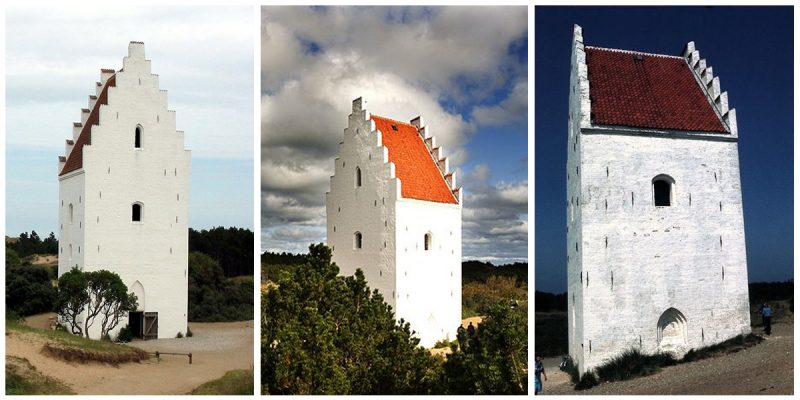Built during the late 14th century, the Sand-Covered Church, also known as The Buried Church, was once the region’s biggest church, dedicated to Saint Lawrence of Rome. It was an enormous structure with long, vaulted nave, exterior buttresses, and a tower with a crow-stepped gable. It is one the oldest buildings in Skagen, built of brick in the Gothic style between 1355 and 1387.
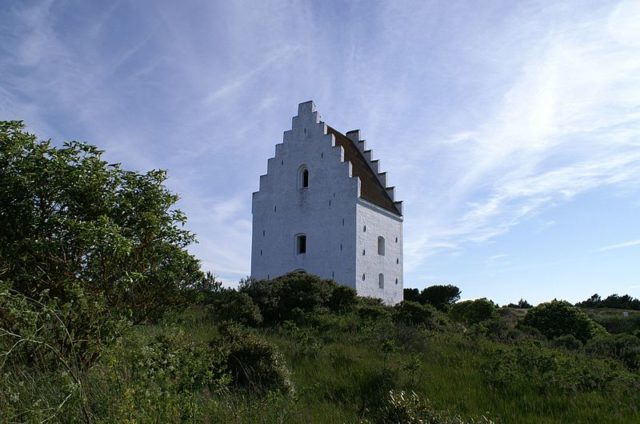
The body of the church was built in red brick with a lead roof, and the tower raised in patterned yellow brick, which was whitewashed over after 1816. The bricks were imported from the Netherlands and Germany, especially from Lübeck. Approximately 18 meters (59 ft) of the tower is visible above the sand today.
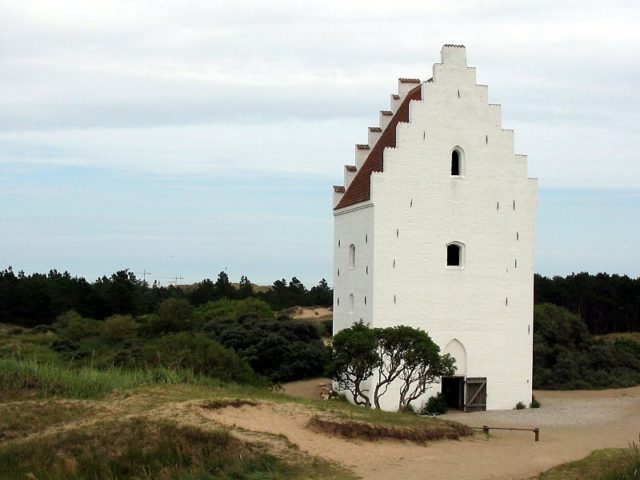
Sand began drifting in from Råbjerg Mile in around 1600 when the area surrounding the church was affected by the process desertification, which also destroyed the surrounding fields. The sand from nearby dunes found its way to the interior of the aging church through every crack.
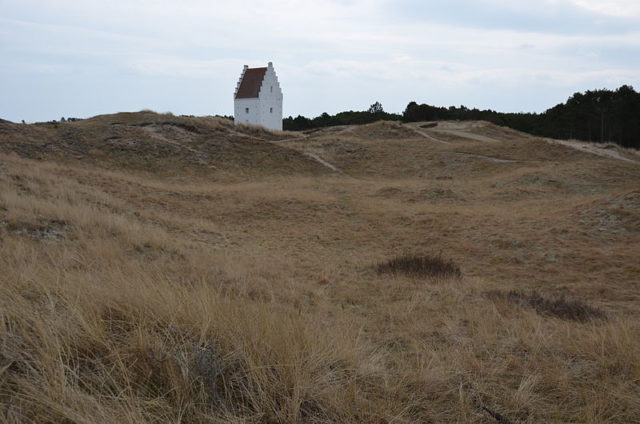
On Great Prayer Day (a Danish religious holiday celebrated on the fourth Friday after Easter) in 1775, the church door had to be dug free for the congregation to be able to attend the service, and for the following 20 years, the Skageners struggled to keep the church free from sand.
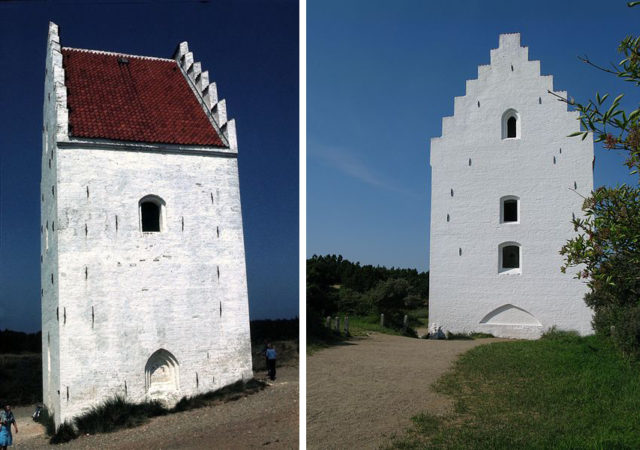
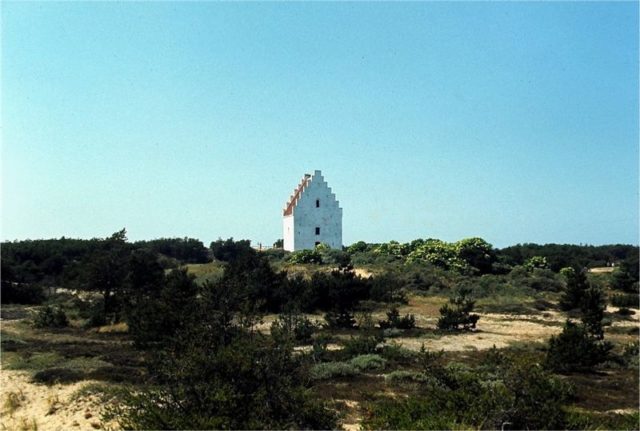
Finally, the Skageners had enough and the church was closed by royal decree. The furnishings and interior decorations along with anything else of value were removed, and the body of the church was demolished, leaving the tower as the only part of the original structure still standing. According to various accounts, the last funeral in the churchyard took place either in 1801 or in 1810. The owner of the site, the National Museum of Denmark, carried out a minor excavation near the tower in the late 19th century. However, the site of the nave has never been excavated and it is believed that the floor, the altar, and the baptismal font are still there under the sand.
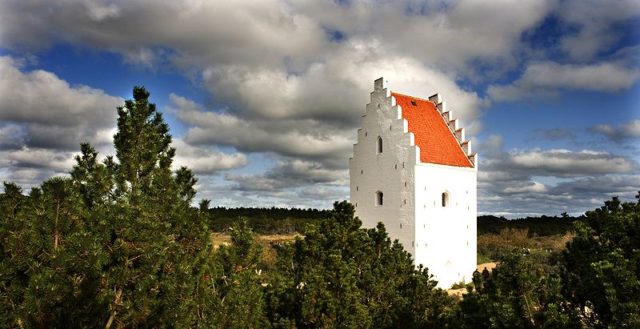
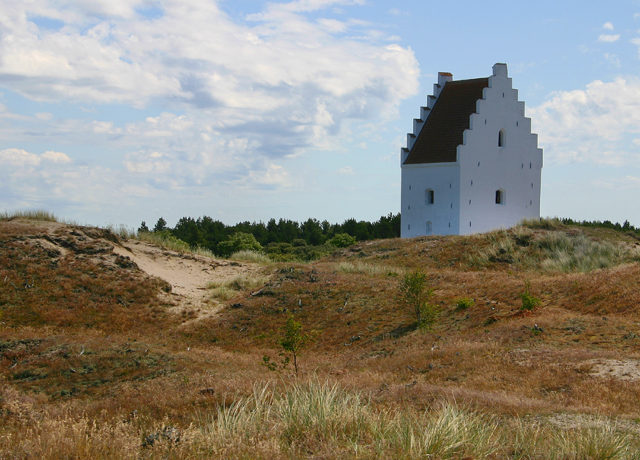
All that is visible of the former church and the now-buried village is the church tower. Although no longer functional, it is still recognized as a navigational landmark and it’s one of the best-known Danish churches today.
